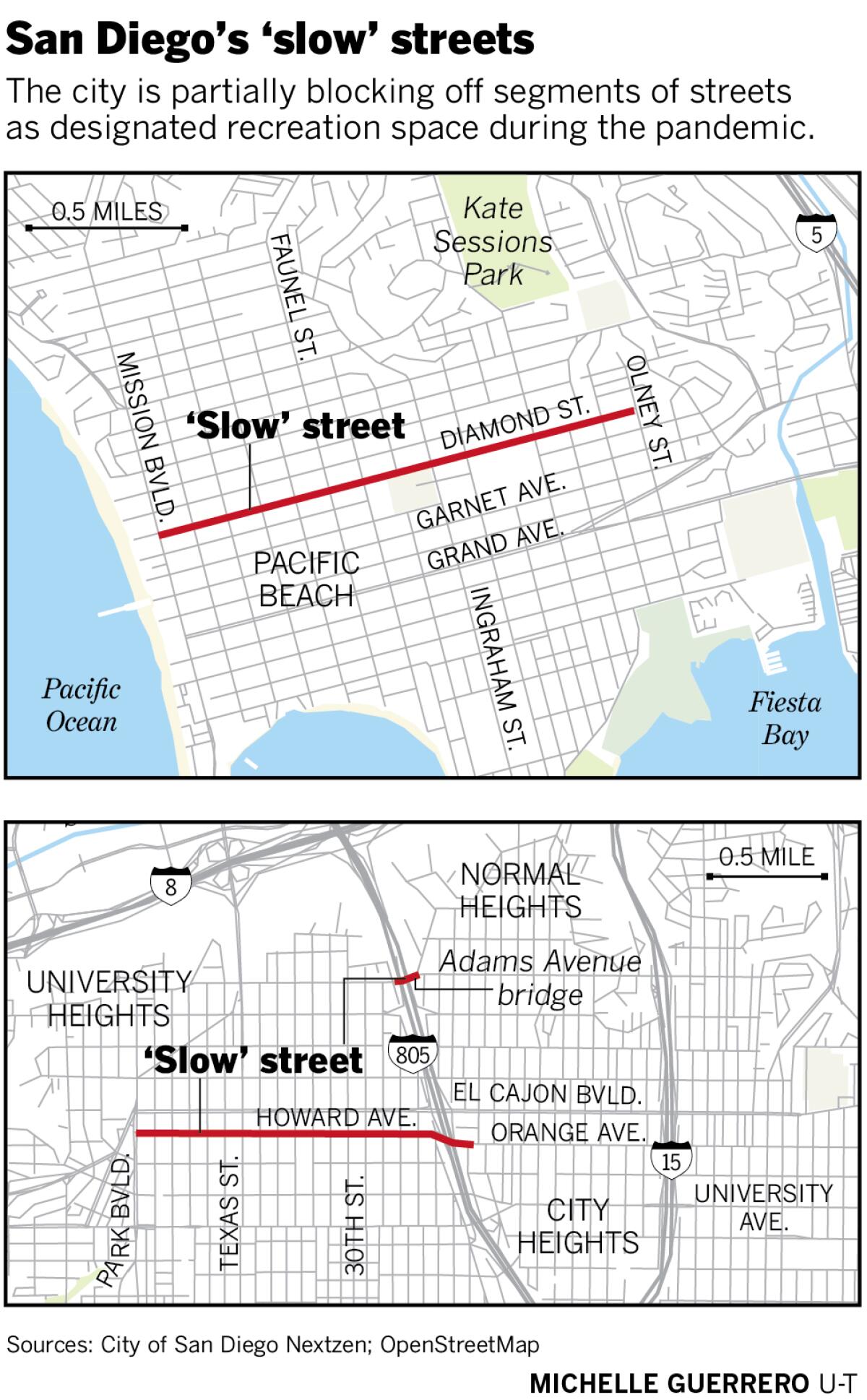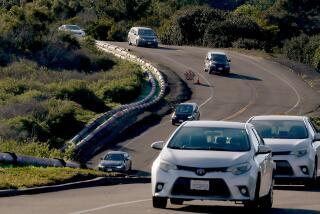San Diego will partially close some streets to boost outdoor recreation space during coronavirus
Changes will also include reopening several cycling paths, installing hygienic pedestrian signals.
SAN DIEGO — San Diego will create more outside recreation space beginning Thursday by transforming four road segments into “slow streets,” where part of the roadway is reserved for pedestrians and cyclists.
The goal is to allow residents to more easily get exercise and move around while also practicing safe social distancing during the COVID-19 pandemic. Social distancing can be difficult on narrow sidewalks or bike lanes.
The city also will reopen several commuter bikeways and install larger “walk” buttons that can be pressed using a clothed elbow instead of a hand. The goal of the larger buttons at pedestrian crossings is preventing the spread of the novel coronavirus.
Another goal of the changes, which the city is calling an experimental pilot program, is reducing congested foot traffic in parks, at beaches and on outdoor trails, which have been partly reopened for passive use.
Environmentalists and pedestrian advocacy groups are praising the changes as a boost to mobility options that can help fight climate change by discouraging traveling by vehicle.
Multiple members of the City Council have been lobbying for such changess.

The four slow streets segments will include Diamond Street from Mission Boulevard to Olney Street in Pacific Beach, Adams Avenue over Interstate 805 in North Park and Normal Heights, and Howard Avenue from Park Boulevard to 33rd Street in Hillcrest and North Park.
City officials said Wednesday afternoon that they were still working out the details for the fourth segment, which will be somewhere in southeast San Diego’s Council District 4.
Mayor Kevin Faulconer said he is working with council members and community leaders to evaluate additional opportunities for slow street segments that are feasible from an engineering and safety standpoint. The city will use barriers and temporary signage to create the segments.
The commuter bikeways that will reopen are state Route 56, Rose Creek, Rose Canyon and state Route 52.
In addition, the city will reopen the San Diego River bikeway from Ocean Beach to Mission Valley and will reopen the bike path along Interstate 15 from Murphy Canyon to the Lake Hodges Bridge.
“COVID-19 has forced us to rethink everything we do and how we go about our daily lives, and what we need right now are more safe spaces for San Diegans to stretch their legs with a walk or a bike ride,” Faulconer said. “This pilot program is about creating more space outside your place by closing a few streets to give people room to be active and maintain their physical distance from others trying to do the same.”
Councilwoman Dr. Jennifer Campbell hailed the new effort.
“It’s time for San Diego to take positive steps to ensure our residents can get the exercise and outdoor time they need,” she said. “That’s why implementing these common sense ideas will make everyone feel safer if they’re out walking, running or riding their bikes.”
The city’s Planning Department and Transportation & Storm Water Department say they are developing a public education campaign to increase pedestrian awareness and safety practices that adhere to social distancing requirements.
In addition to the larger walk buttons at pedestrian crossings, the city also has adjusted signals in key areas to reduce pedestrian wait times.
Since the stay-at-home order went into effect, vehicular traffic has decreased significantly and alternative modes of travel have become increasingly popular. Several areas of the city have seen more than 1,000 pedestrian trips per day.
“The mayor’s slow streets initiative will create the space needed so that San Diegans can access their essential jobs or essential needs while physically distancing and staying safe,” said Maya Rosas, policy director for Circulate San Diego.
Garrick writes for the San Diego Union-Tribune.
More to Read
Sign up for Essential California
The most important California stories and recommendations in your inbox every morning.
You may occasionally receive promotional content from the Los Angeles Times.










